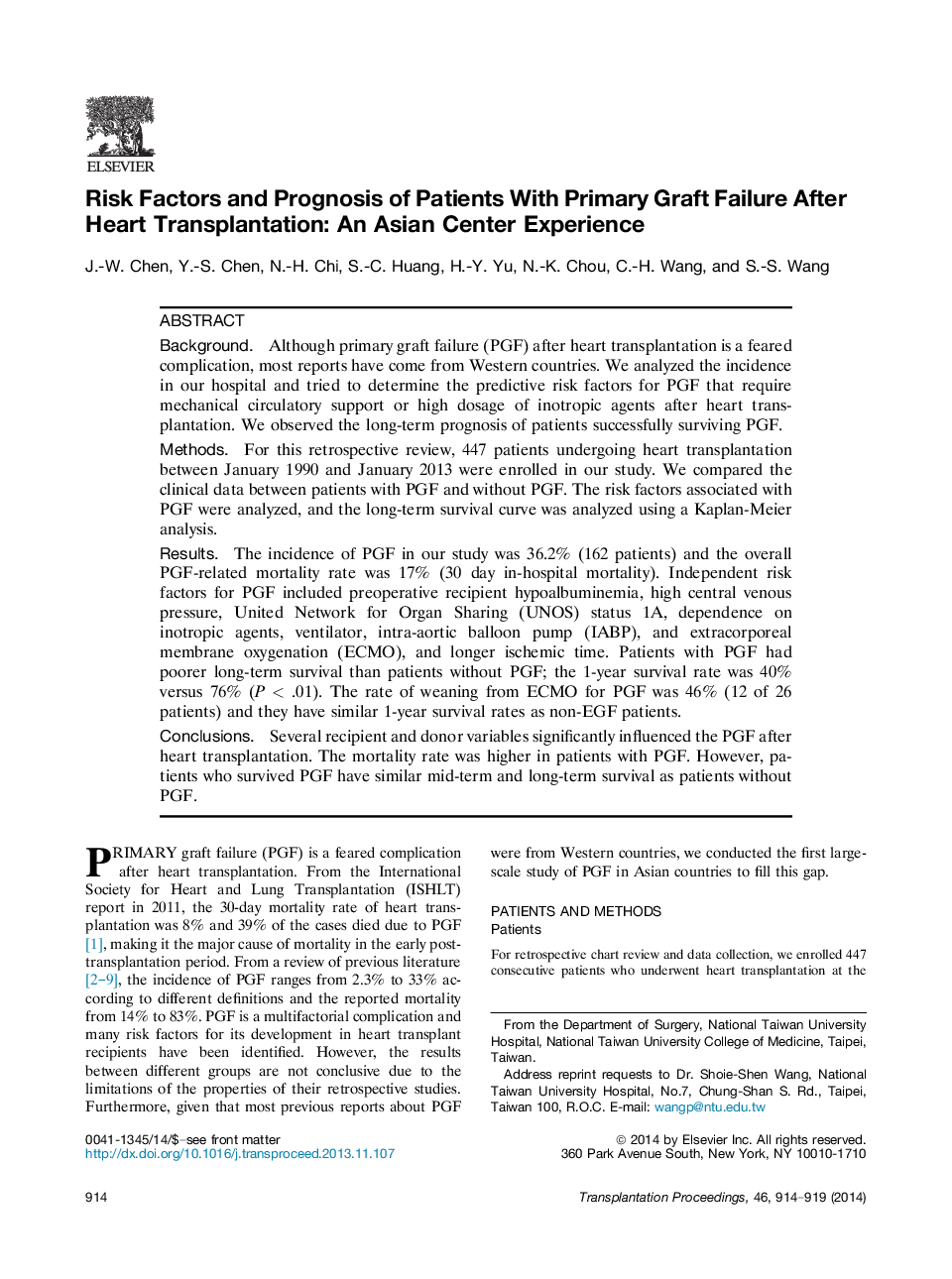| Article ID | Journal | Published Year | Pages | File Type |
|---|---|---|---|---|
| 4258426 | Transplantation Proceedings | 2014 | 6 Pages |
BackgroundAlthough primary graft failure (PGF) after heart transplantation is a feared complication, most reports have come from Western countries. We analyzed the incidence in our hospital and tried to determine the predictive risk factors for PGF that require mechanical circulatory support or high dosage of inotropic agents after heart transplantation. We observed the long-term prognosis of patients successfully surviving PGF.MethodsFor this retrospective review, 447 patients undergoing heart transplantation between January 1990 and January 2013 were enrolled in our study. We compared the clinical data between patients with PGF and without PGF. The risk factors associated with PGF were analyzed, and the long-term survival curve was analyzed using a Kaplan-Meier analysis.ResultsThe incidence of PGF in our study was 36.2% (162 patients) and the overall PGF-related mortality rate was 17% (30 day in-hospital mortality). Independent risk factors for PGF included preoperative recipient hypoalbuminemia, high central venous pressure, United Network for Organ Sharing (UNOS) status 1A, dependence on inotropic agents, ventilator, intra-aortic balloon pump (IABP), and extracorporeal membrane oxygenation (ECMO), and longer ischemic time. Patients with PGF had poorer long-term survival than patients without PGF; the 1-year survival rate was 40% versus 76% (P < .01). The rate of weaning from ECMO for PGF was 46% (12 of 26 patients) and they have similar 1-year survival rates as non-EGF patients.ConclusionsSeveral recipient and donor variables significantly influenced the PGF after heart transplantation. The mortality rate was higher in patients with PGF. However, patients who survived PGF have similar mid-term and long-term survival as patients without PGF.
